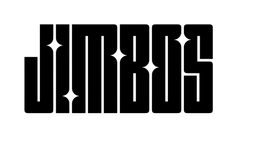The Ultimate Beginner’s Guide to Paint Polishing
Ready to polish your car but not sure where to start? This guide breaks it all down—from tools to technique—so you can get pro-level results at home.
Paint polishing is one of the most effective ways to bring your car’s shine back to life. It removes swirls, oxidation, and light scratches—restoring depth, clarity, and gloss. But it’s also one of the most misunderstood steps in detailing.
This guide gives you everything you need to polish your paint safely and confidently, without damaging it or overthinking the process.
What Does Polishing Actually Do?
Polishing removes a microscopic layer of clear coat to level out defects like swirl marks, water spots, oxidation, and haze. Done right, it makes your paint look dramatically better—without the need for repainting or touch-ups.
When Should You Polish?
- Your paint looks dull, hazy, or lacks gloss
- You see swirl marks under direct light
- You’ve never corrected your car before
- You’re prepping for ceramic coating or wax
Step 1: Prep the Surface
Before you polish, the surface needs to be surgically clean. Start with a proper wash using The Super Soaper, then clay the surface if it feels rough. You want a smooth, contaminant-free base before polishing.
Step 2: Choose the Right Polish
Don’t overcomplicate it. If you’re new, start with a high-quality one-step like Picture Perfect Polish. It cuts well enough to remove most swirls but finishes down perfectly, even on soft or dark paint.
Step 3: Select the Right Pad
Pad selection controls how aggressive your polish will be:
- Use a cutting pad for heavier defects
- Use a polishing pad for moderate swirls
- Use a finishing pad for ultra-soft paint or light gloss enhancement
See our full guide: Pad Selection 101 – Cut, Finish, and Everything In Between
Step 4: Work Panel by Panel
Apply 3–4 small dots of polish to your pad, then work in a 2x2 ft section. Use slow arm speed and moderate pressure. Overlap your passes and make 3–4 passes per section. Wipe off residue with a soft towel like the Softer Than Soft Microfiber Towel.
Step 5: Inspect and Repeat as Needed
Use an inspection light or sunlight to check your work. If needed, repeat with a different pad or do a final finishing pass. Don’t chase perfection—focus on real-world improvement.
Step 6: Protect the Finish
Polishing removes defects, but it also removes protection. Always seal your results with a high-quality ceramic spray like Tough As Shell to lock in the shine and shield the paint.
Watch the Process
Recommended Products
- The Super Soaper – Pre-Wash Soap
- Picture Perfect Polish – One-Step Correction
- Tough As Shell – Spray Ceramic Protection
- Softer Than Soft Microfiber Towel
More Paint Correction Tips
- The Biggest Polishing Mistakes Most People Make
- Do You Really Need to Clay Before Polishing?
- One-Step Polish vs Compound & Polish – What’s Better?
- Pad Selection 101 – Cut, Finish, and Everything In Between




